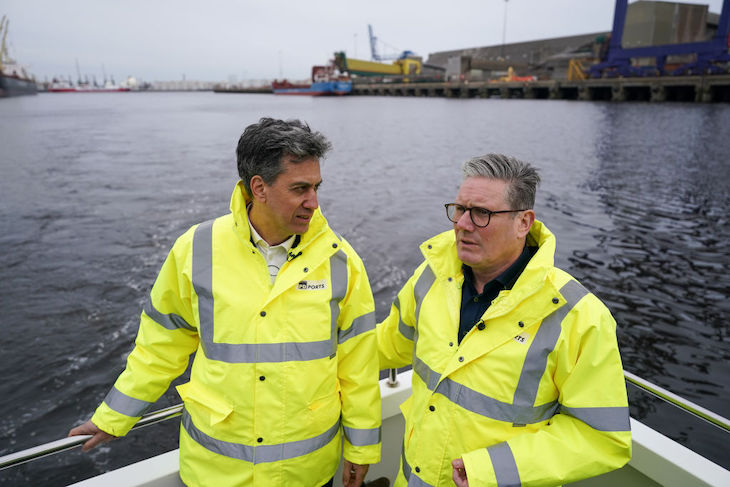Ed Miliband has suddenly realised that you cannot run an electricity grid on intermittent renewables alone. The Energy Secretary’s announcement this morning of £14.2 billion worth of funding for a new plant at Sizewell C, together with cash for Small Nuclear Reactors (SMRs) and continued research into the holy grail of nuclear fusion, is an admission that energy policy so far has been far too concentrated on wind and solar.
Ed Miliband has promised that his green energy policy will reduce our bills by £300 a year by the end of this Parliament
But nothing that Miliband has unveiled does anything to help the energy and climate secretary achieve his ambition to decarbonise the electricity supply by 2030 – or ease the coming crunch as he tries to reach that target. It has already been 15 years since the government approved plans for a new nuclear plant at Hinkley C – which developers EDF promised would be ready to cook our Christmas turkeys by 2017. The earliest it will now open is 2029, by which time it will have cost at least £46 billion.
Hinkley C is proposed to use the same design, which has proved difficult and costly to build in France and Finland, too. Why Miliband should think it will be any different this time around is hard to tell. To judge by past experience, it will be the 2040s before Sizewell C is cooking our turkeys. The only change in Sizewell C’s case is that the UK taxpayer will be bearing far more of the construction costs. In Hinkley C’s case, EDF is supposed to be bearing all the risk; with Sizewell C, that has been mostly transferred to the taxpayer.
Nor are SMRs going to save Miliband. There is logic in reducing the scale of nuclear reactors so that they can be built on a production line rather than by bespoke design on-site. It is good that Rolls Royce has won the competition for government cash to develop its SMR design, £2.5 billion funding for which has also been announced today. Nevertheless, there is hardly anyone who believes that SMRs will be up and running before 2035. There is also no guarantee they will prove cheaper than existing large nuclear plants.
As for nuclear fusion, that is still worth pursuing, such is the potential prize. But the International Energy Agency (IEA) believes that the second half of this century is a more realistic timescale to expect the technology to be commercialised – if even then. That will be a hundred years after the chairman of the Atomic Energy Commission suggested that his children’s generation would live to enjoy electricity which was “too cheap to meter”. It is unlikely to be in time for the government’s overall 2050 net zero target, let alone Miliband’s 2030 target for decarbonising the grid.
Meanwhile, existing nuclear plants are rapidly approaching the end of their lives, with all but Sizewell B scheduled to close by 2030. According to the National Energy Systems Operator (NESO), the 6.1 GW of nuclear power the UK had available in 2023 will fall to between 3.5 GW and 4.1 GW by 2030, even if the lives of some current plants can be extended.
While we are unlikely to see new nuclear power before 2030, the bill for building Sizewell C certainly will begin to land on our doormats by then – either through a surcharge on energy bills or through general taxation. That is something of a problem for Miliband because, as we should never stop reminding him, he has promised that his green energy policy will reduce our bills by £300 a year by the end of this Parliament. That is looking a more foolish pledge by the day.







Comments